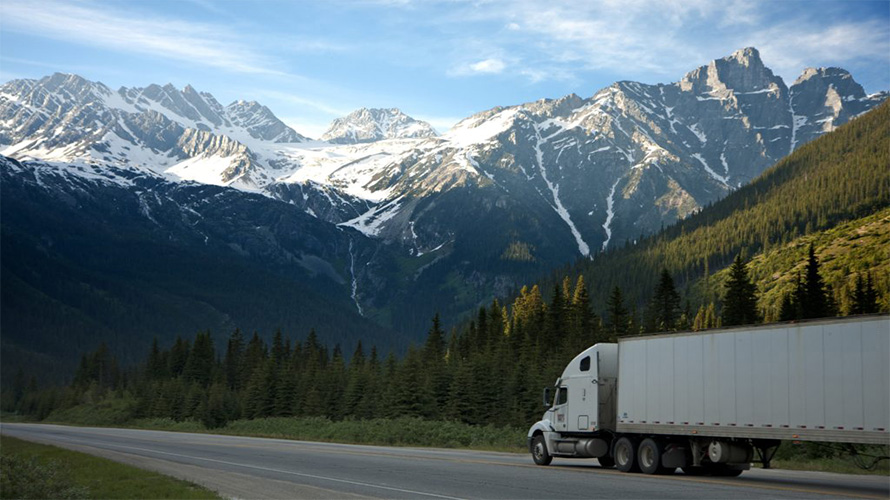Driving on Mountain Roads: The Art of Combining Caution and Skill

Driving on mountain roads is one of the most challenging yet beautiful experiences a professional driver can have. These roads, with their sharp twists and turns, steep slopes, and breathtaking views, represent a true test of a driver’s skill and experience.
Understanding the Unique Characteristics of Mountain Roads
Mountain roads are completely different from regular roads. They often feature steep uphill and downhill gradients that can significantly impact vehicle performance. Sharp, often sudden curves, limited visibility especially around bends, and abrupt changes in weather conditions are other characteristics of these roads. Additionally, the narrow width of the roads, with rock walls on one side and precipices on the other, requires extreme precision and concentration.
Vehicle Preparation: The First Condition for Safety
Before embarking on mountain roads, a thorough vehicle inspection is essential. The braking system must be in optimal condition, as brakes undergo tremendous stress during long, steep descents. Brake pads should be in good condition, and brake fluid should have been recently replaced. Tires are also particularly important. Tires should have sufficient tread depth, and air pressure should be set according to manufacturer recommendations. Worn tires can be extremely dangerous on mountain roads.
The steering and suspension systems also require careful inspection. On winding roads, the precise and trouble-free operation of these systems is crucial. Additionally, ensuring the health of the vehicle’s electrical system, particularly lights and especially fog lights, is very important since weather conditions at high altitudes can change rapidly and reduce visibility.
Driving Techniques for Various Mountain Conditions
On steep downhill slopes, you should never rely solely on the brakes. Using engine braking by shifting to a lower gear reduces pressure on the brakes and prevents them from overheating and losing effectiveness. For very steep slopes, periodic stops in designated areas to cool the brakes are recommended.
On mountain curves, speed should be significantly reduced. The best method is to reduce speed before entering the curve and maintain a constant speed while navigating it. Using the horn on tight curves with insufficient visibility can alert vehicles around the bend to your presence.
Navigating mountain tunnels also requires following specific principles. Before entering a tunnel, vehicle lights must be turned on. Adjusting speed according to visibility limitations in the tunnel is essential, and maintaining a safe distance from the vehicle in front should be observed more carefully.
Managing Emergency and Unexpected Situations
Dealing with large vehicles like trucks and buses on mountain roads requires patience and caution. In sections where the road is narrow, it’s better to stop at wider spots and give way to larger vehicles. In case of encountering an avalanche or landslide, remain calm and immediately contact emergency numbers.
Attention to Human and Environmental Factors
Fatigue can be very dangerous on mountain roads. Regular stops every two hours for rest, drinking enough water, and getting fresh air are essential. Paying attention to weather conditions and checking weather forecasts before departure are other important points. Also, carrying essential equipment like snow chains, a first aid kit, blankets, and sufficient water and food can be lifesaving in emergencies.
Conclusion: Respect for the Road and Nature
Driving on mountain roads requires, above all, respect for the road and an understanding of its special conditions. These roads are part of the sensitive mountain ecosystem, and driving on them comes with specific responsibilities. Observing speed limits, keeping the road environment clean, and respecting nature and other road users are all part of the culture of driving on mountain roads.
Other Links
-
Driver Life: What Are the Pros and Cons of Life on the Road? – Second Part
-
Resumption of activity of the Mokran Pakhshe Kavir Company
-
Specialized training of Mokranbar fleet
-
Happy Muhammad’s revelation
-
Recommendations for Road Transportation in Critical Conditions (e.g., Wa
-
Visiting the construction operations of the company’s branch in Baft City
-
8 Practical Ways to Reduce Transportation Logistics Costs
-
9 Trends in the Transportation and Logistics Industry to Look Out for in 2025
-
Transportation of Dangerous Goods (Chemicals, Flammable Materials, etc.) by Road
-
Continuing the process of cooperation with Hezar Aluminum Industries

New Comment
All Comments
There are no comments about this post yet!